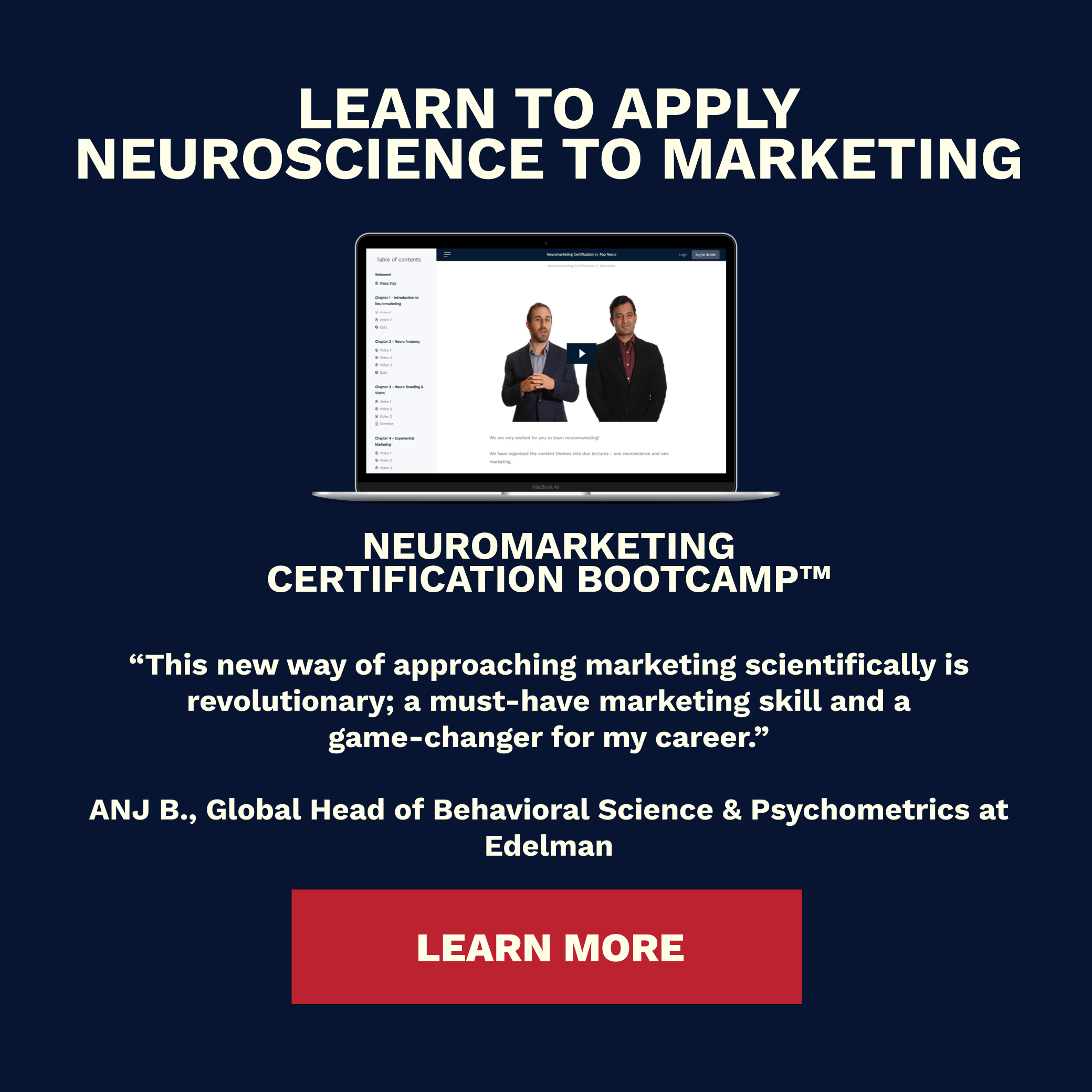How Psychological Biases Shape Marketing Strategies
Marketing & Psychological Biases Photo by Victoriano Izquierdo
In marketing, understanding the intricacies of consumer behavior is key to crafting strategies that resonate with consumers. Psychological biases, those ingrained tendencies that influence our decision-making processes, play a profound role in shaping our perceptions and responses to marketing efforts.
In this post, we'll delve into the fascinating intersection of psychology biases and marketing strategy, exploring how each of the listed biases can be harnessed to create effective and compelling marketing campaigns.
Confirmation Bias: Reinforcing Beliefs for Connection
Confirmation bias, the inclination to seek out information that aligns with preexisting beliefs, is a potent tool in the marketer's arsenal. By tailoring messages and content to resonate with consumers' existing viewpoints, brands can forge a deeper connection. When consumers encounter messages that reinforce their beliefs, they are more likely to engage and feel understood, fostering a sense of loyalty and trust.
Imagine a health and wellness brand targeting eco-conscious consumers. By crafting content that highlights the brand's commitment to sustainability and aligns with the values of its target audience, the brand not only captures attention but also cultivates a strong bond with consumers who feel their beliefs are validated.
Availability Heuristic: Capitalizing on the Familiar
The availability heuristic, our tendency to rely on readily available information, is a gateway to crafting persuasive marketing campaigns. By leveraging recent or vivid examples, marketers can make their offerings more accessible and relatable. This bias is particularly useful for products or services that have achieved recent success or garnered positive attention.
Consider a tech company launching a new smartphone model. By showcasing recent user testimonials and reviews that highlight the device's impressive features and performance, the brand taps into the availability heuristic. Consumers are more likely to resonate with and trust the information that aligns with what they've recently encountered.
Anchoring Bias: Setting the Stage for Perception
Anchoring bias, the tendency to give undue weight to the first piece of information encountered, offers a valuable lesson for marketers. By strategically presenting initial information, brands can shape consumer perceptions and expectations. This bias is especially powerful in pricing strategies, where the first price presented serves as an anchor for subsequent judgments.
Overconfidence Bias: Inspiring Empowerment
The overconfidence bias, which leads individuals to overestimate their abilities, can be harnessed to inspire confidence and empowerment in consumers. Marketing campaigns that convey a sense of mastery and the idea that consumers can easily overcome challenges with a particular product can resonate deeply.
Consider a cooking appliance brand promoting its innovative blender. By showcasing individuals effortlessly preparing gourmet meals and emphasizing the ease of use, the brand taps into the overconfidence bias. Consumers may be more likely to believe in their own ability to replicate such culinary feats, thereby increasing the likelihood of a purchase.
Hindsight Bias: Crafting Narratives of Inevitability
Hindsight bias, the inclination to perceive past events as predictable, offers marketers a unique storytelling opportunity. Brands can weave narratives that portray their success as a natural outcome due to their unique qualities or strategies. This fosters a sense of credibility and trust among consumers.
Imagine a startup highlighting its rapid growth and market dominance. By framing its journey as a series of strategic steps that inevitably led to success, the brand establishes a compelling narrative that instills confidence in its products or services.
Cognitive Dissonance: Aligning with Values
Cognitive dissonance, the discomfort of holding conflicting beliefs, can guide marketing strategies toward aligning with consumer values. Brands can emphasize how their offerings resonate with consumers' principles, reducing discomfort and reinforcing purchasing decisions.
Consider a sustainable fashion brand promoting its ethically sourced clothing line. By highlighting the positive impact of each purchase on both the consumer and the environment, the brand addresses cognitive dissonance and encourages conscious consumption.
Loss Aversion: Urgency and Limited-Time Offers
Loss aversion, the preference for avoiding losses over acquiring gains, is a powerful driver of consumer behavior. Marketers can harness this bias by creating a sense of urgency through limited-time offers or emphasizing potential losses if consumers fail to take action.
An online retailer, for example, might employ loss aversion by showcasing a "Flash Sale" with a countdown clock, signaling that time is running out to snag a deal. This tactic taps into consumers' fear of missing out and prompts swift action.
Confirmation Bias: Trust Through Familiarity
Confirmation bias, reiterated here for its profound impact, can be leveraged to build trust through familiarity. Brands can curate user reviews and testimonials that validate their offerings, creating a sense of consensus among satisfied customers.
Imagine a skincare brand featuring glowing reviews from individuals who have experienced remarkable transformations. By showcasing before-and-after photos and authentic testimonials, the brand appeals to consumers' confirmation bias and reinforces the perception of its products' effectiveness.
Sunk Cost Fallacy: Loyalty and Continued Engagement
The sunk cost fallacy, the inclination to persist based on past investments, informs strategies aimed at fostering loyalty. Brands can establish loyalty programs or subscription models that encourage consumers to continue investing in the brand to maximize their prior commitments.
An airline, for instance, might offer a frequent flyer program where loyal customers earn rewards for continued travel. This approach taps into the sunk cost fallacy, encouraging consumers to stick with the brand to maximize their previous travel investments.
Halo Effect: Impression Shapes Perception
The halo effect, where an initial positive impression influences overall judgment, provides a roadmap for shaping consumer perception. By creating visually appealing and memorable brand experiences, marketers can establish a positive initial impression that reverberates throughout the consumer journey.
Consider a luxury automobile brand unveiling its latest model at an exclusive event. By meticulously designing the launch to evoke awe and luxury, the brand creates a halo effect that extends beyond the event, enhancing the perception of its entire product line.
Recency Bias: Staying Relevant in the Now
Recency bias, which gives greater weight to recent events, guides marketers toward staying relevant and top-of-mind. By spotlighting recent achievements, updates, or trends, brands can ensure that their offerings capture consumers' attention and align with current interests.
A streaming platform, for example, might promote its newest original series through targeted advertisements and social media campaigns, capitalizing on recency bias to pique consumer interest and drive engagement.
Framing Effect: Context Shapes Choices
The framing effect, which highlights how choices are presented, underscores the importance of context in marketing strategies. Brands can frame benefits and features in ways that resonate with different consumer segments, maximizing appeal.
An eco-friendly cleaning product brand, for instance, might emphasize its product's powerful cleaning capabilities in a marketing campaign targeting practical-minded consumers. In a separate campaign targeting environmentally conscious consumers, the same product might be framed as a sustainable choice that contributes to a greener planet.
Self-Serving Bias: Empowering the Consumer
Self-serving bias, the inclination to attribute positive outcomes to one's own abilities, can empower consumers to make confident decisions. Brands can inspire this confidence by highlighting how their offerings empower consumers to achieve desired outcomes.
Consider a financial planning service showcasing success stories of clients who achieved significant savings through their advice. By emphasizing the clients' active role in their financial success, the brand nurtures consumers' self-serving bias and fosters a sense of control over their financial future.
Social Desirability Bias: Showcasing Aspirations
Social desirability bias, the inclination to present oneself favorably, guides marketers toward showcasing aspirational aspects of their offerings. Brands can create narratives that resonate with consumers' desire to be seen in a positive light, encouraging engagement.
An athletic apparel brand, for instance, might feature individuals sharing their fitness journeys and accomplishments while wearing the brand's products. By aligning with consumers' aspiration to lead healthy and active lives, the brand taps into social desirability bias and creates a relatable connection.
Anchoring Bias: Setting the Stage for Perception
Anchoring bias, reiterated here to underscore its significance, continues to offer valuable insights. Marketers can anchor consumers' perceptions by strategically presenting initial information, shaping judgments, and influencing decisions.
Availability Heuristic: Accessible Experiences
The availability heuristic, tied to the concept of accessible information, guides marketers toward presenting recent examples and success stories that resonate with consumers' memories and perceptions.
Groupthink: Fostering Community
Groupthink, where a desire for consensus drives decisions, informs strategies that foster community and collective sentiment. Brands can create platforms for consumers to share experiences, fostering a sense of belonging and unity.
Negativity Bias: Addressing Pain Points
Negativity bias, the tendency to give greater weight to negative information, informs strategies aimed at addressing consumer pain points and offering solutions that alleviate discomfort.
Imagine a cybersecurity software brand highlighting the risks of online threats and demonstrating how its product provides comprehensive protection. By addressing consumers' fears and offering a solution, the brand taps into negativity bias and positions itself as a valuable ally in navigating the digital landscape.
Fundamental Attribution Error: External Validation
The fundamental attribution error, which leads individuals to attribute others' behavior to internal traits, informs strategies that highlight external factors contributing to success. Brands can showcase expert endorsements or favorable market conditions to influence consumer perceptions.
The fusion of psychology and marketing is a fascinating exploration of the human mind's intricacies and how they intersect with the world of commerce. By understanding and harnessing the power of psychological biases, marketers can create campaigns that resonate deeply with consumers, shaping perceptions, and driving engagement. As we've journeyed through each bias, it becomes evident that the art of persuasion is not merely a skill, but a delicate dance between human nature and strategic communication. By embracing these insights, marketers can navigate this dance with finesse, crafting campaigns that captivate, engage, and inspire action.


































Dive into the fascinating intersection of psychology and marketing and how to use psychological biases in marketing strategy.